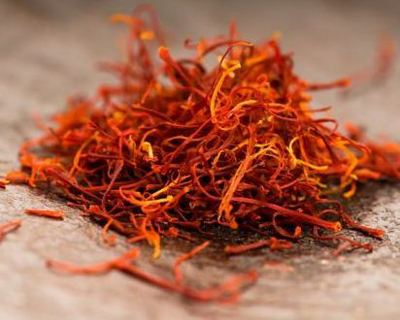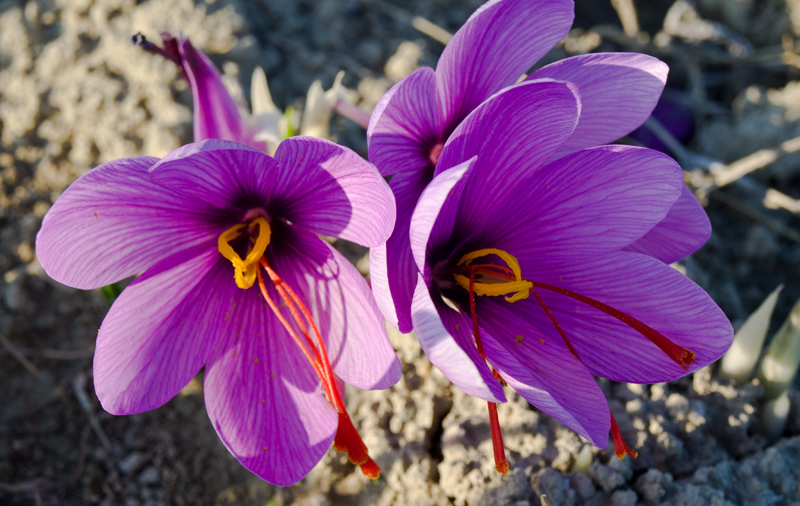Greek Saffron ( Crocus )
The history of Greek red saffron or Krokos Kozanis (Crocus Sativus Linneaus plant) dates back to prehistoric Greece.
In modern Greece, it starts again in the 17th century when traders from Kozani, Macedonia, bring the red saffron back from Austria.
For 300 years, Greek red saffron is systematically cultivated under the warmth of the Greek sun, in the rich soil of a unique area in Kozani, in western Macedonia and is considered to be one of supreme qualities, worldwide.
As a medicinal and dyeing substance it has been known in ancient Greece for its aroma, vibrant colour and aphrodisiac properties, thus making it one of the most desired and expensive spices. Another use in ancient Greece was that of perfumery also using it to perfume the water while bathing.
Frescoes in the palaces of Knossos (1.600 b.C.) clearly depict a young girl gathering crocus flowers as well as in the archaelogical site of Akrotiri, in Santorini and Homer, in his writings calls dawn "a crocus veil".

The Greek word "crocus" has its origin in Greek mythology:
Crocus was a dear friend of Greek god Hermes ( in Ancient Greece. One day, while the two friends were throwing the disc to each other, Hermes hit Crocus on the head and wounded him fatally.
As the young man collapsed and was dieing three drops from his blood fell on the centre of a flower thus becoming the three stigmata (plural of the word stigma) of the flower named after him.
Etymologically, the word crocus has its origin from the Greek work "kroki which means weft, the thread used for weaving on a loom.
Crocus is a grassy plant reproduced with bulbs. Each flower has three stigmata of saffron, also called filaments, which are joined by the style.

In Greece it is cultivated exclusively in Kozani region. Collecting crocus is not an easy job. The workers, bent for hours over the plants, collect and place the flowers in their cloth aprons and then transfer them into baskets. A skilled worker can collect 30,000 flowers in a single day. It takes 150.000 flowers to deliver 1 kilogram of dried crocus stigmata, thus making it the most expensive spice in the world. The stigmata are extracted by hand from the freshly harvested flowers and then laid out to dry. Once dried, they are irregular, deep orange threads. Collecting, sorting and processing are done without any help from technology.
Crocus was considered a rare pharmaceutical plant of ancient Greece with unique properties. It is referred to throughout ancient history and in the course of many medical writings of the classical Greek and Roman times all the way to the Middle Ages. Hippocrates and other Greek contemporary doctors, like Dioskourides and Galinos mention crocus as a drug or a therapeutical herb. It was considered as a painkiller, antipyretic, heeling wounds, hypnotic (remedy of sleeplessness), good for the stomach etc.
In modern medicine, the healing properties of the plant have been widely known.
Crocus is considered a most interesting pharmaceutical plant. Its profound antioxidant properties are long proven. Krokos prevents platelet aggregation, it is highly antiflamatory and improves cerebral function and it is still under research for its cancer preventive properties. Other properties of crocus are for lowering cholesterol, indigestion, nausea and soothing infant teething.
Greek red saffron is considered to be the King of Spices. Its excellent quality places it in the top quality saffron in the world. A small quantity adds an exquisite flavour, colour and aroma in all your dishes. Krokos Kozanis is perfectly pure and combined with coffee or tea forms an excellent beverage.






